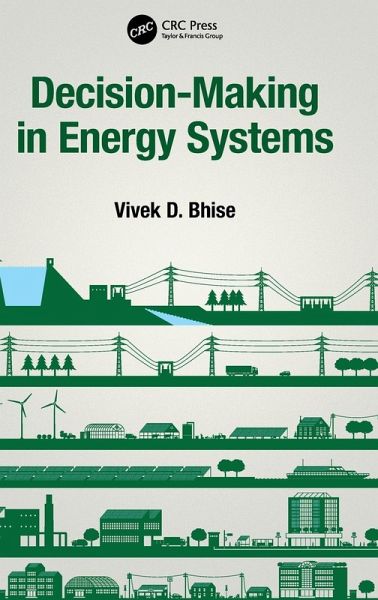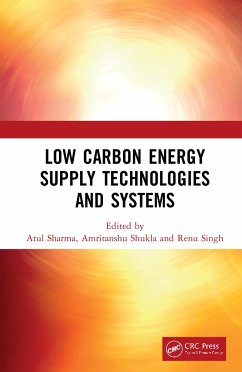Vivek D. Bhise
Gebundenes Buch
Decision-Making in Energy Systems
Versandkostenfrei!
Versandfertig in 1-2 Wochen
Weitere Ausgaben:

PAYBACK Punkte
68 °P sammeln!




This is a comprehensive book on how to make complex decisions on energy systems problems involving different technologies, environmental effects, costs, benefits, risks, and safety issues.
Vivek D. Bhise is currently a LEO Lecturer/Visiting Professor and a Professor in post-retirement of Industrial and Manufacturing Systems Engineering at the University of Michigan-Dearborn. He received his B.Tech. in Mechanical Engineering (1965) from the Indian Institute of Technology, Bombay, India, M.S. in Industrial Engineering (1966) from the University of California, Berkeley, California and Ph.D. in Industrial and Systems Engineering (1971) from the Ohio State University, Columbus, Ohio. During 1973 to 2001, he held several management and research positions at the Ford Motor Company in Dearborn, Michigan. He was the manager of Consumer Ergonomics Strategy and Technology within the Corporate Quality Office, and the manager of the Human Factors Engineering and Ergonomics in the Corporate Design of the Ford Motor Company where he was responsible for the ergonomics attribute in the design of car and truck products. Dr. Bhise is the author of recent books entitled "Ergonomics in the Automotive Design Process" (ISBN: 978-1-4398-4210-2. Boca Raton, FL: CRC Press, 2012), "Designing Complex Products with Systems Engineering Processes and Techniques" (ISBN: 978-1-4665-0703-6. Boca Raton, FL: CRC Press, 2014.) and "Automotive Product Development: A Systems Engineering Implementation" (ISBN: 978-1-4987-0681-0. Boca Raton, FL: CRC Press, 2017). He has also written over 100 technical papers in the design and evaluation of automotive interiors, parametric modeling of vehicle packaging, vehicle lighting systems, field of view from vehicles, and modeling of human performance in different driver/user tasks. Dr. Bhise has taught graduate courses in Vehicle Ergonomics, Vehicle Package Engineering, Automotive Systems Engineering, Management of Product and Process Design, Work Methods and Industrial Ergonomics, Human Factors Engineering, Total Quality Management and Six Sigma, Quantitative Methods in Quality Engineering, Energy Evaluation, Risk Analysis and Optimization, Product Design and Evaluations, Safety Engineering, Computer-Aided Product Design and Manufacturing, and Statistics and Probability Theory over the past 39 years (1980-2001 as an adjunct professor, 2001-2009 as a professor, and 2009-present as a visiting professor in post-retirement) at the University of Michigan-Dearborn. He also worked on several research projects in human factors with Late Prof. Thomas Rockwell at the Driving Research Laboratory at the Ohio State University (1968-1973). Dr. Bhise has served as an expert witness on cases involving automotive ergonomics, quality, and safety, patent infringement and highway safety. He received the Human Factors Society's A. R. Lauer Award for Outstanding Contributions to the Understanding of Driver Behavior in 1987. He has served on several committees of the Society of Automotive Engineers (SAE), the Motor Vehicles Manufacturers Association (MVMA) the Transportation Research Board (TRB) of the National Academies and the Human Factors and Ergonomics Society (HFES).
Produktdetails
- Verlag: CRC Press
- Seitenzahl: 388
- Erscheinungstermin: 28. Dezember 2021
- Englisch
- Abmessung: 240mm x 161mm x 25mm
- Gewicht: 746g
- ISBN-13: 9780367620158
- ISBN-10: 0367620154
- Artikelnr.: 62712818
Herstellerkennzeichnung
Libri GmbH
Europaallee 1
36244 Bad Hersfeld
gpsr@libri.de
Für dieses Produkt wurde noch keine Bewertung abgegeben. Wir würden uns sehr freuen, wenn du die erste Bewertung schreibst!
Eine Bewertung schreiben
Eine Bewertung schreiben
Andere Kunden interessierten sich für













